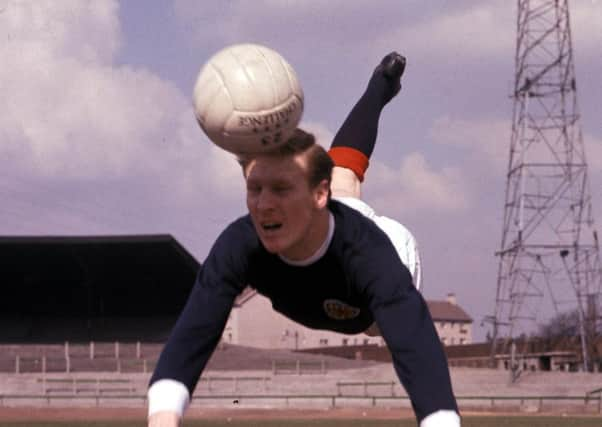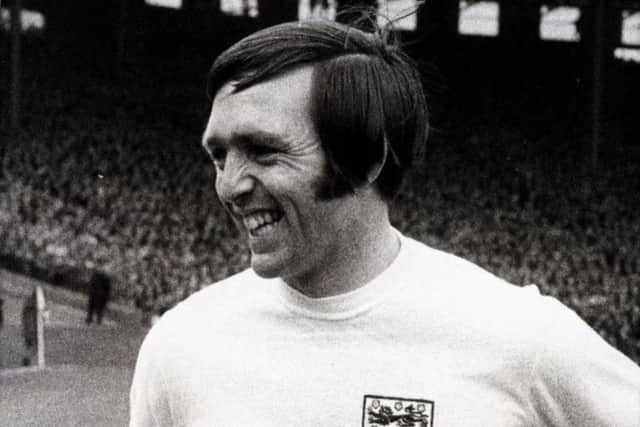Football’s age of ignorance about dementia is over – Martyn McLaughlin


It should have been commissioned years, if not decades ago, but it has been gratifying to see the widespread interest in the publication of a new, landmark study into the links between football and brain disease.
While headlines focused on the study’s most arresting conclusion – former professional players are three-and-a-half times more likely to die from dementia than the general population – its other findings were no less disturbing.
Advertisement
Hide AdAdvertisement
Hide AdEx-footballers, it pointed out, face a range of other risks, from a five-fold increase in Alzheimer’s disease, a four-fold increase in motor neurone disease, and a two-fold increase in Parkinson’s disease.


After years of speculation, anguish, and confusion, this pioneering work has produced at least one indisputable fact: to embark on a career as a professional footballer is to accept a heightened risk of contracting a neurodegenerative disease.
There are important caveats to note in the study, which was commissioned by the Football Association and the Professional Footballers’ Association amid growing anger from the family of Jeff Astle, the former England striker.
Astle died in 2002, and a coroner recorded a verdict of “death by industrial disease”, with a neurological expert pointing to “considerable evidence of trauma” to his brain, similar to that experienced by a boxer.
Calls for outright ban
The new study, however, does not draw any definitive causal link between the higher levels of brain disease in former players and repeated concussions, or the heading of older leather footballs.
Neither does it point to any significant difference in the deaths among ex-goalkeepers and outfield players from neurodegenerative diseases.
These are crucial qualifications to consider alongside the study’s primary findings, and ones which render responses to it problematic.
For some, nothing less than an outright ban on heading the ball, beginning with youth players, will suffice.
Advertisement
Hide AdAdvertisement
Hide AdBennet Omalu, the prominent neuropathologist who blazed a trail with his discovery of chronic traumatic encephalopathy American football players, believes there should be a ban on heading the ball for players under the age of 18.
“It is not intelligent for a human being to use his head to stop or deflect a ball travelling at a high velocity,” he reasons. “As a society we should evolve.”
Such calls have been echoed by the widow of the late Dundee United star, Frank Kopel, who died of dementia in 2014 aged 65.
Amanda Kopel said the Scottish Football Association (SFA) should put in place “stringent rules” all the way down to the grassroots to ensure “none of these youngsters are getting balls thrown at them in training”.
She added: “It is up to the SFA to come up with a law and say, ‘You must follow these guidelines’. It has to be followed through.”
It is difficult not to sympathise with such calls, particularly when they come from those who have been forced to watch their loved ones endure a slow and painful decline. Families such as the Kopels have been ignored for too long, and their voices must be prominent in the debate to come.
Sanctity of the game
But in light of the new study, led by Dr Willie Stewart, a consultant neuropathologist and an honorary clinical associate professor at the University of Glasgow, it would seem essential to conduct more research into the links between head impacts and the increased prevalence of neurological diseases among former players.
This is not avoiding the issue at hand, as football authorities did so shamefully throughout the 1990s and beyond. Nor is it some churlish ‘jumpers for goalposts’ style desire to preserve the sanctity of an innately physical sport.
Advertisement
Hide AdAdvertisement
Hide AdIt is simply a recognition that until that relationship can be identified beyond all doubt, there are plenty of other positive steps that can, and must, be taken in the meantime.
Make no mistake, the significance of this groundbreaking study and its sheer scale and rigour – it scrutinised the causes of death of more than 7,600 Scottish league footballers over a timeframe spanning three-quarters of a century – will lead to growing calls for football’s governing bodies to bring about change.
The most obvious one is the need to bring football’s concussion protocols in line with other sports.
UEFA’s procedures stipulate that in the event of a suspected concussion, referees should stop the game for up to three minutes to allow players to receive treatment. They will only be allowed to continue following specific confirmation from a team doctor that they are fit and able.
It might well sound all-encompassing, but the uselessness of this measure was clear to see earlier this year when Tottenham’s Jan Vertonghen was treated for five minutes after suffering a head injury and allowed to resume playing. His return was all too brief, as he struggled to stand, forcing medical officials to help him off the pitch.
Dr Stewart believes such safeguards are not fit for purpose, and pointed to the robust welfare standards in rugby, where temporary substitutions are allowed for head injuries.
“In rugby, a player who potentially has a head injury is taken off and looked at with a series of tests. It doesn’t happen in football, it is all done on the run,” he said.
Football still has some way to go to fully understand that a sport with abundant rewards is also fraught with risk, but there are simple, practical changes that can be put in place to better protect players. The time for ignorance is over.
